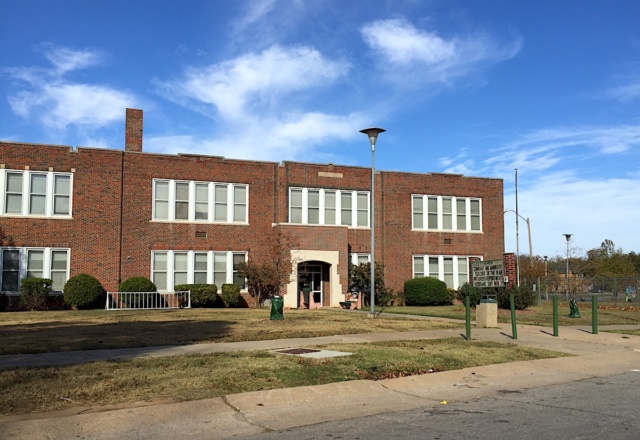

(Editor’s note: Today, NonDoc presents two examinations of Oklahoma’s education system following the defeat of State Question 779 by voters Nov. 8. On one hand, John Thompson writes that education advocates have reason to be optimistic despite obstacles. On the other, James Davenport writes below how Oklahoma needs a new system entirely.)
Now that State Question 779 has failed, perhaps it is time to reassess what is needed to accomplish true education reform in Oklahoma. The simple fact is that we have an education system that was fundamentally designed to meet the needs of industrialization more than a century ago.
This makes some sense, given that the economic environment most 19th-century students would have entered was increasingly one of factories rather than farms. Employers needed workers who could do basic math, reading and writing, and who could be trained to show up to work on time and follow instructions. Standardization was a priority. Moving students through the same steps at the same time while learning the same material nicely supported America’s growing industrialization.
However, we have long-passed the industrial revolution. We are now in the age of the entrepreneur. This entrepreneurship economy demands a different approach to education. Whereas stability and standardization are the key ingredients to good factory workers and managers, problem-solving and creativity are the order of the day for entrepreneurs. Make no mistake: Whether people work for themselves or for a company, we are all increasingly expected to bring the characteristics of the entrepreneur to what we do. Chief among those characteristics is problem solving. At the end of the day, that’s what entrepreneurship is about — identifying and overcoming challenges.
The education system we need to allow our citizens to thrive in this emerging economic environment should include the features necessary to help students become effective problem solvers, regardless of the specific careers they pursue. So what should such a new education system look like if it is going to provide students the skills to succeed in this emerging economy?
Individualize, enhance choices and deregulate
First, it should be individualized rather than standardized. We know all students do not process information the same way or at the same pace. Rather than attempting to force them to do so, and thereby ensuring some will always be labeled as “slow,” “average” or “gifted” — none of which may be accurate — the new education system America needs should accommodate these differences and provide an environment in which each student can maximize his and her learning opportunities.
Second, the system should enhance the choices available to parents and students to find the right school and learning environment for their children. This is the only true way to achieve the first goal of individualizing learning. One school, or one type of school, cannot possibly meet the needs of all students and parents. We should quit pretending otherwise. Can we have a system that maximizes the options available without ending our commitment to public education? I believe we can, but only if we rediscover what “public education” truly means.
A third attribute this revised public education system should include is deregulation. There is no reason the Oklahoma Legislature should determine teacher pay, curriculum requirements, lunch menus or any other decisions regarding the operations of schools. In fact, we in Oklahoma have seen the contentious battles over curriculum and teacher pay that have taken place in the Legislature. Pushing these decisions down to local school districts will not only free the Legislature of these contentious issues, it will greatly de-politicize those issues. Some might protest that, if the state does not set these standards, school districts would have no oversight to ensure quality. However, accrediting organizations are already an important aspect of many schools (both in higher education and K-12) and could certainly be used to ensure the quality of schools.
‘Education is a public good’
As a society, we have come to the conclusion that education is a public good. The argument is that many benefit who are not directly involved in education by having a more educated citizenry. As a public good, we have committed to spending tax dollars toward the provision of education. When we speak of public education, this is the commitment that is universally maintained. If education is a public good, and if the state is primarily responsible for ensuring the provision of public goods, then tax dollars devoted to that purpose are a natural consequence.
However, agreeing that education is a public good and that we should devote tax dollars to providing it does not inherently imply there is only one type of “public school.”
Innovation limited in current #oklaed system
By narrowly defining public education to brick-and-mortar buildings with teachers paid directly by the government and whose administrators are bound by government regulations, we have unnecessarily denied a world of educational opportunities to parents and families. Moreover, we have lost one of the greatest attributes of markets and entrepreneurship: innovation. It is innovation that drives organizations to constant improvement in services and products. By confining public education to the straitjacket of one option of educational opportunity, we deny society of the benefits that could be realized from the innovation spurred by choice and competition.
‘Fundamental reform’ needed
It’s time to realize our system needs fundamental reform. We’re no longer supporting the industrial revolution. Our students need new skills and a system that will maximize their opportunities to develop those skills.
Creating a new education system that allows parents and students to individualize a child’s learning experience provides a variety of educational options. A new system that pushes many of the important decisions down to the local level and out of the hands of legislators will produce better results for students, teachers and society.




















